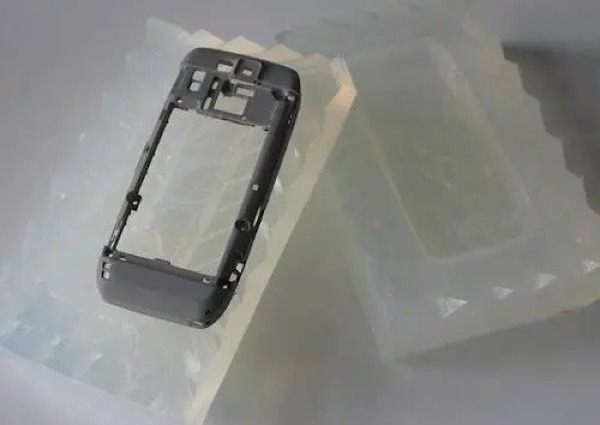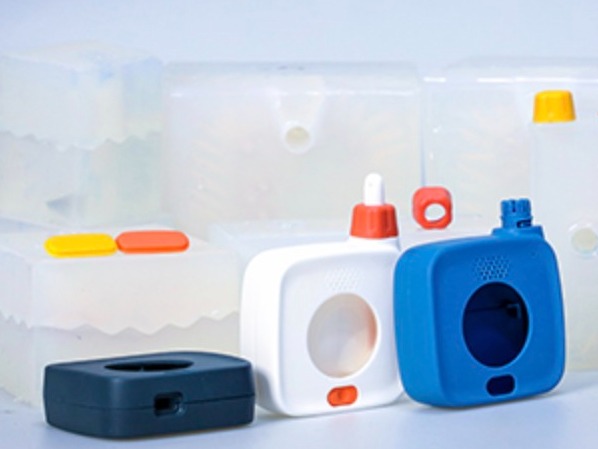Bridge the Gap From Prototype to Production
Global delivery in 10 days or less
Vacuum Casting - Urethane Casting
Zigitech is fully capable of handling your vacuum casting and
silicone molding needs. With years of expertise in the field, we can fabricate
your plastic parts to the highest standard, as well as cost-efficient and with
fast turnarounds.
Vacuum casting is a great method to make rigid or
flexible parts, and is ideal for high quality prototypes, function testing,
concept proofing and display demos. Urethane casting parts can be made from a
few to hundreds as required.
Contact us
today for more information about our casting services.
Advantages of Vacuum Casting
1 Fast turnaround
Zigitech can provide up to 20 parts in 15
days or less, depending on part specification and
volume.
2 Affordability
Silicone molds are less expensive than the tooling used for
injection molding, resulting in low prices.
3 Capable of producing large parts
Depending on the type of equipment used, vacuum casting can
to create very large parts.
4 Superior surface finish to injection molding
The vacuum process removes air bubbles and allows the
material to capture fine details.
5 Color options
Coloring pigments can be added to the resin for a variety of
color options.
6 Repeatability
Silicone molds can be used around 20 times before they need
replacing.
Vacuum casting is a manufacturing technology that uses a vacuum to draw liquid casting material
into a mold. It differs significantly from injection molding, which pushes liquid material into a mold using a
screw.
The process of vacuum casting offers significant advantages, and is particularly
useful for parts that have undercuts or fine details.
The process starts with a master
model, which Zigitech creates using one of its CNC machining centers — though 3D printing can also
be used. This master model is then immersed in liquid silicone, which is cured and becomes the
mold.
Once it has been cut and the master model removed, the silicone mold can be put to
use. This stage involves pouring casting resin into the mold, as the vacuum removes bubbles and
air pockets to ensure a smooth finish.
The resin part is then cured in an oven and removed
from the silicone mold after cool down, which can be reused around 20 times.
Each cast part
is an exact copy of the original master model. It’s a perfect solution for rapid prototyping and
making small batches of quality parts.

Vacuum Casting
Process
| Step
1:Master
building |
Masters
are 3D solids of your CAD designs.
They are usually made by CNC
machining or with 3D Printing.
Making Master in 40° temperature.
After finish and inspect the
masters, we will move to silicone mold
making. |
| Step
2: Mold making
|
Casting
molds are made from liquid silicone.
Half-Fill the casting box with
liquid silicone, Heat the casting
box until silicone is fully
cured and then allowed to cure in an
oven for 16 hours. Fill with extra
silicone liquid which is
also heated &
cured. Once dried, the mold is
cut open and the master
removed. |
| Step
3: Make the
parts |
Poured
the casting resins into the
empty cavity to create a highly
accurate copy of the original. It’s
even possible to overmold with two
or more materials. Silicone molds
are typically good for 20 or so
copies of the master pattern.
|
Vacuum Casting
Technical Specifications
| Typical
lead time |
Up
to 20 parts in 15 days or less, depends on the
part specification and volumes. |
| Accurate
|
±
0.3% (with lower limit on ± 0.3 mm on dimensions
smaller than 100 mm) |
| Minimum
wall thickness
|
To
ensure that the mold is filled properly, a wall
thickness of at least 0.75 mm is necessary. For
best results, we recommend a wall thickness of
at least 1.5 mm |
| Maximum
part dimensions
|
The
size of the mold is limited by the dimensions of
the vacuum chamber (1900 x 900 x 750 mm) and by
the volume of the product (maximum volume: 10
liters) |
| Typical
quantities |
Up
to 25 copies per mold (depending on the mold’s
complexity and the casting materials)
|
| Color
& Finishing
|
Pigment
is added to the liquid polyurethane prior to
casting, custom painting and texture.
|
Vacuum Casting FAQ
Why would I
choose vacuum casting over injection molding?
Vacuum casting is a more affordable alternative to IM, especially
in low volumes. It also offers unique advantages like an
excellent surface finish.
Can I make
production-quality parts using vacuum casting?
Vacuum casting is best for making visually impressive prototypes,
but it can also be used for non-mechanical end-use parts like
cases and covers.
What
happens to the silicone mold(s)? Can I keep them?
The silicone molds used in vacuum casting have a short lifespan,
typically around 20 moldings, so we dispose of them after use.
If you wish to keep the 3D printed or CNC machined master model,
talk to us directly.






